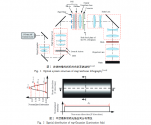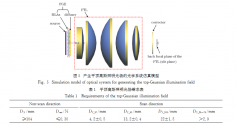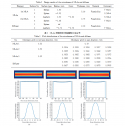Research on Correction Technology of Light Field Intensity Distribution of Lithography Machine
Correction Technology for Illumination Field Intensity Profile in Photolithography MachineMa Xiaozhe1,2
1- Laboratory of Information Optics and Optoelectronic Technology Shanghai Institute of Optics and Fine Mechanics Chinese Academy of Sciences Shanghai
2-Center of Materials Science and Optoelectronics Engineering University of Chinese Academy of Sciences Beijing China
In 28 nm and below node lithography machine, the flat-top Gaussian illumination light field is one of the key technologies to reduce the influence of pulse quantization error on exposure dose. In order to reduce the difficulty in the design, processing and assembly of the flat-top Gaussian illumination light field generating components, a technique for calibrating the illumination light field intensity distribution of a lithography machine is proposed. This technique can obtain a suitable transmittance distribution of the light field correction plate through fewer algorithm iterations, and takes the dimensional tolerance requirement of the intensity distribution in the scanning direction as a boundary condition to reduce the energy loss caused by the correction. The obtained light field correction plate can simultaneously correct the integral uniformity of the illumination light field in the non-scanning direction and the intensity distribution of the light field in the scanning direction. The simulation analysis results show that the light field correction plate obtained by this technology can correct the integral uniformity of the illumination light field in the non-scanning direction to less than 0.29%, and can also correct the intensity distribution in the scanning direction within the index range, and the energy loss introduced by the correction is also reduced. An average reduction of 4.09% can be achieved. The proposed technique can improve the productivity of the lithography machine to a certain extent.



Some research and development in the optimization optimization of optics in scan lithography machines.
